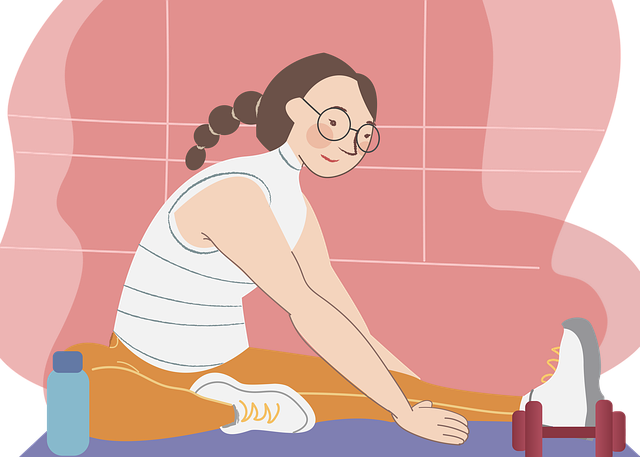Monthly Archives: May 2025
Selling Your Wellness Practice? Avoid These Common Valuation Mistakes
 Selling your wellness practice is a big decision. It’s often the result of years of hard work, dedication, and care for your patients. Whether you’re retiring or transitioning to a new chapter, getting the valuation right is critical. A misstep here can cost you thousands—or even millions. Many wellness professionals, from chiropractors to holistic health practitioners, make avoidable mistakes when valuing their practice. These errors can lead to undervaluing their business or scaring off potential buyers. Let’s explore the common pitfalls and how to sidestep them for a successful sale.
Selling your wellness practice is a big decision. It’s often the result of years of hard work, dedication, and care for your patients. Whether you’re retiring or transitioning to a new chapter, getting the valuation right is critical. A misstep here can cost you thousands—or even millions. Many wellness professionals, from chiropractors to holistic health practitioners, make avoidable mistakes when valuing their practice. These errors can lead to undervaluing their business or scaring off potential buyers. Let’s explore the common pitfalls and how to sidestep them for a successful sale.
One major mistake is focusing only on financials. Revenue and profit matter, but they don’t tell the whole story. Buyers want to see a thriving practice with loyal patients and growth potential. For example, a practice with consistent patient retention and strong community ties is more valuable than one with high revenue but shaky loyalty. To avoid this trap, consider factors like patient engagement, brand reputation, and operational efficiency. Curious about other ways to protect your practice’s value? Check out how to avoid practice valuation mistakes for expert insights. By looking beyond the numbers, you present a more compelling case to buyers.
Don’t Ignore Market Trends
Another error is ignoring market trends. The wellness industry evolves fast. Trends like telehealth, personalized wellness plans, or integrative care can boost your practice’s appeal. If you’re not showcasing how your business aligns with these trends, you’re leaving money on the table. For instance, a practice offering virtual consultations or cutting-edge therapies like cryotherapy might attract more interest than one stuck in outdated methods. Stay informed about industry shifts. Highlight how your practice adapts to modern demands. This approach signals to buyers that your business is future-proof.
Patient Engagement Matters
Patient engagement is another overlooked factor. A practice with a loyal patient base is a goldmine. Buyers aren’t just purchasing your equipment or location—they’re investing in relationships. High patient retention shows stability and trust. Are your patients raving about your services? Do they refer friends and family? These are signs of a healthy practice. To strengthen this, focus on patient satisfaction before selling. Simple steps like sending follow-up emails or offering loyalty programs can make a difference. Show buyers that your patients are committed, and your practice’s value will soar.
Showcase Growth Potential
Growth potential often gets ignored. Buyers want a practice with room to expand. If your business is maxed out—say, you’re booked solid with no space for new patients—it might seem less attractive. On the flip side, a practice with untapped opportunities, like adding new services or expanding into a nearby market, is a draw. Highlight these possibilities during valuation. Maybe you’ve got a great location but haven’t marketed enough. Or perhaps you could add a new practitioner to handle more clients. Paint a picture of what’s possible. It excites buyers and boosts your asking price.
Streamline Operations
Don’t forget about operating systems. A practice that runs like a well-oiled machine is worth more. Disorganized records, outdated software, or a chaotic scheduling process can scare buyers away. Before selling, streamline your operations. Use modern practice management software. Ensure your financial records are clear and up-to-date. A buyer will feel confident if they see a business that’s easy to take over. Plus, it shows you’ve cared for the practice, which adds to its perceived value.
Avoid Emotional Valuation
Emotions can cloud judgment during valuation. Some owners overvalue their practice due to personal attachment. Others undervalue it, thinking it’s “just a small business.” Both mistakes can hurt. Hire a professional appraiser who understands the wellness industry. They’ll provide an objective valuation based on market data, financials, and intangibles like goodwill. This step ensures you’re not guessing—or worse, losing out.
Timing Is Everything
Timing is another critical factor. Selling too soon or too late can affect your valuation. If your practice is declining due to market shifts or personal burnout, waiting too long could lower its value. Conversely, selling during a growth phase can maximize returns. Monitor your practice’s performance and the broader market. Aim to sell when your business is strong and the market is favorable.
Avoiding these pitfalls takes effort, but it pays off. A well-valued practice attracts serious buyers and ensures you get what your business is worth. Focus on the big picture—financials, market trends, patient loyalty, growth potential, and operations. With careful planning, you’ll transition out of your wellness practice with confidence and financial security.
Mental Well-being and Performance Enhancers: Navigating the Psychological Effects

Performance-enhancing substances promise a quick boost to physical abilities, but their impact on mental well-being is often overlooked. These substances, ranging from anabolic steroids to stimulants, can alter mood, cognition, and emotional stability in profound ways. Understanding these psychological effects is crucial for anyone considering their use, whether for athletic performance or other goals. Balancing the pursuit of enhanced performance with mental health requires careful navigation, informed choices, and proactive strategies.
Performance enhancers often attract users with their ability to push physical limits, but the psychological toll can be significant. For instance, syn pharma steroids are known for boosting muscle growth and strength, but they can also trigger mood swings, anxiety, or even aggression. These changes stem from how these substances interact with brain chemistry, particularly hormones like testosterone and cortisol. Users might feel a surge of confidence or euphoria initially, only to face irritability or depression as the body adjusts. This rollercoaster of emotions can strain relationships and cloud judgment, making it essential to weigh the mental risks alongside physical gains.
Why the Mind Reacts
Why do these substances affect the mind so deeply? The brain is sensitive to chemical changes. Performance enhancers often disrupt the balance of neurotransmitters like dopamine and serotonin, which regulate mood and behavior. Steroids, for example, can increase dopamine levels, leading to feelings of invincibility. But over time, this overstimulation may cause dependency or withdrawal-like symptoms when use stops. Similarly, stimulants used for focus or energy can heighten anxiety or paranoia, especially with prolonged use. These shifts can feel subtle at first, but they compound, potentially leading to long-term mental health challenges.
Cognitive Impacts
Beyond mood swings, cognitive effects are another concern. Some users report improved focus or motivation, but others experience brain fog or impaired decision-making. Studies suggest that long-term use of certain enhancers, particularly steroids, may affect memory or increase the risk of cognitive decline. This creates a paradox: substances meant to optimize performance can sometimes undermine the mental sharpness needed to excel. For athletes or professionals relying on quick thinking, this trade-off can be costly. Recognizing these risks early can help users make informed decisions before habits form.
Emotional Strain
Transitioning to the emotional side, performance enhancers can also amplify stress. The pressure to maintain peak performance, combined with chemical imbalances, can create a vicious cycle. Users might feel trapped, fearing that stopping the substance will lead to a drop in performance. This fear can fuel anxiety or even depression, especially if external expectations—like those from coaches or peers—are high. Social stigma around using enhancers adds another layer of stress, as individuals may hide their use, leading to feelings of isolation. Acknowledging these emotional burdens is the first step toward addressing them.
Protecting Mental Health
So, how can users protect their mental health while navigating performance enhancers? First, education is key. Understanding the specific risks of a substance, including its psychological effects, empowers better choices. Consulting with healthcare professionals before starting use can provide clarity on safe dosages and potential side effects. Regular check-ins with a doctor or therapist can also catch early signs of mood or cognitive changes. Knowledge isn’t just power—it’s a shield against unintended consequences.
Building Support
Another strategy is building a support system. Open communication with trusted friends, family, or mentors can ease the emotional weight of using enhancers. Support groups or online communities offer a space to share experiences without judgment. These connections remind users they’re not alone, reducing the isolation that often accompanies secretive use. Plus, having someone to talk to can make it easier to spot when mood swings or stress become unmanageable.
Lifestyle Matters
Lifestyle habits also play a huge role in maintaining mental balance. Regular exercise, a balanced diet, and adequate sleep can stabilize mood and counteract some of the negative effects of enhancers. Mindfulness practices, like meditation or journaling, help users stay grounded and aware of their emotional state. These habits don’t just support mental health—they enhance overall performance, creating a win-win. Why rely solely on substances when holistic strategies can amplify results?
READ ALSO: Emotional Intelligence and Its Role in Men’s Health and Well-Being
Seeking Help
What about when the psychological effects become overwhelming? Seeking professional help is critical. Therapists or counselors trained in substance use can offer tailored strategies to manage mood swings or anxiety. Cognitive-behavioral therapy, for example, can help reframe negative thought patterns triggered by chemical imbalances. In severe cases, where dependency or depression takes hold, medical intervention may be necessary. There’s no shame in asking for help—it’s a sign of strength, not weakness.
Finding Balance
Ultimately, performance-enhancing substances are a double-edged sword. They can unlock physical potential but carry risks that ripple through mental and emotional health. By staying informed, building support networks, and prioritizing lifestyle habits, users can mitigate these effects. Mental well-being isn’t just about avoiding harm—it’s about thriving. Making conscious choices ensures that the pursuit of excellence doesn’t come at the cost of inner peace.
The Role of Nutrition in Childhood Development
Childhood is a fast growing and developing phase when the groundwork for a good life is laid. And nutrition is at the core of this basis; it is the gasoline running every milestone, from developing strong bones to sharpening intellect. It’s about cultivating potential rather than only stuffing tummies.
How Diet Affects Children’s Development
Key Vitamins and Their Effects
Found in fruits and vegetables, vitamins A, C, and zinc—immune boosters—strengthen the immune system, therefore guarding against disease—and emphasise the need of immunity. From whole grains and fruits, complex carbohydrates—which give consistent energy for active activity and learning—emphasize the need of energy. Although lean meats, eggs, and beans contain protein for muscle builders, this emphasises physical development since aids muscle building and repair.
Developing Good Habits
Providing a wide spectrum of meals guarantees youngsters get all the required nutrients, thereby stressing dietary variety. Encouragement of children to pay attention to their hunger signals helps them to develop lifetime good eating habits and conscious eating. Eating together emphasises the social side of food and promotes family ties as well as improves connections with food. Reducing processed snacks and sugary drinks also shields kids against long-term health hazards, thereby stressing the need of good choices. Emphasising education, teaching youngsters about good nutrition helps them to make wise decisions.
Final Statements
Mostly depending on diet, childhood development determines not just physical development but also cognitive ability and general well-being. Children can grow and reach their best potential if we give nutrient-dense foods first priority and support appropriate eating habits.




